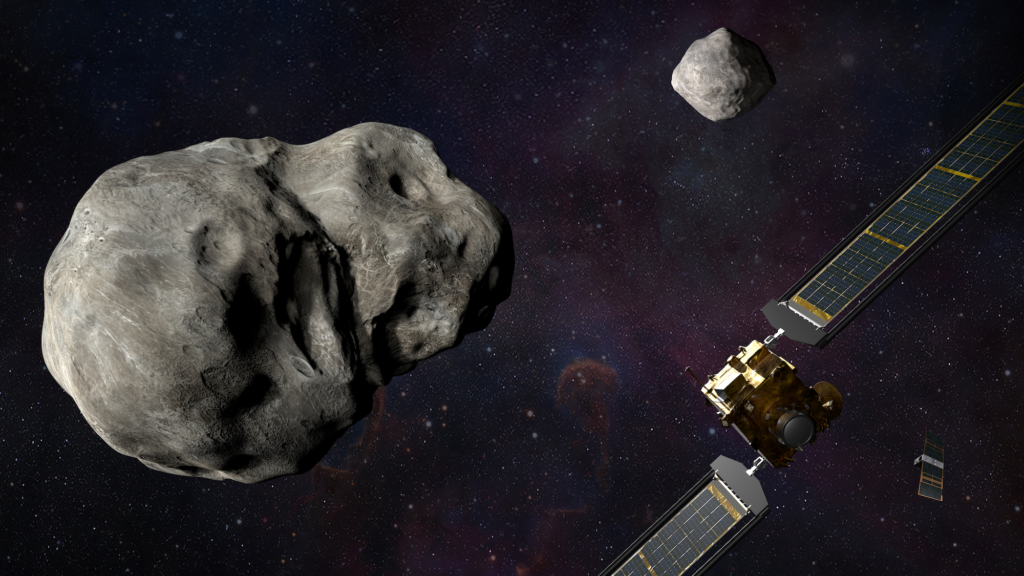
Rocket Lab’s Acquisitions Continue To Play An Important Role
Rocket Lab has proven to be a company with a limitless amount of ambitious ideas. However, one thing that makes Rocket Lab special is its ability to actually reach these goals. CEO Peter Beck has highlighted many different times that he intends for Rocket Lab to become much more than just a launch provider. While the company has had a lot of success with Electron and plans for Neutron, they also are creating a host of different space technology.
For years now Rocket Lab has been acquiring different companies that each focus on specific space hardware. Whether this is separation systems, satellite dispensers, or solar panels, Rocket Lab has been interested. Now as we get closer to the end of 2022, we are seeing real examples of these acquisitions paying off with missions like DART, GLIDE, and more.
All of which in some way benefit or use Rocket Lab’s hardware. As the company continues to grow we will likely see them continue on this path and become a one stop shop for different customers hoping to access and utilize space. Here I will go more in-depth into some of the upcoming missions utilizing Rocket Lab’s hardware, the acquisitions themselves, and more.
Upcoming Missions

Just in the last few days, Rocket Lab has provided a few updates that give perfect examples of its acquisitions at work. On August 23rd, Rocket Lab tweeted saying, “It’s (almost) asteroid smashing time! Watching DART’s crash will be @ASI_spazio’s LICIACube. We’re supporting the small sat’s journey to the asteroid inside one of our satellite dispensers, which will deploy LICIACube ten days before DART’s impact to catch the action on camera.” This is referring to DART, which is the first-ever mission dedicated to investigating and demonstrating one method of asteroid deflection by changing an asteroid’s motion in space through kinetic impact. This method will have DART deliberately collide with a target asteroid—which poses no threat to Earth— in order to change its speed and path. DART’s target is the binary, near-Earth asteroid system Didymos, composed of the roughly 780-meter (2,560-foot) -diameter “Didymos” and the smaller, approximately 160-meter (530-foot)-size “Dimorphos,” which orbits Didymos. DART will impact Dimorphos to change its orbit within the binary system, and the DART Investigation Team will compare the results of DART’s kinetic impact with Dimorphos to highly detailed computer simulations of kinetic impacts on asteroids. Doing so will evaluate the effectiveness of this mitigation approach and assess how best to apply it to future planetary defense scenarios, as well as how accurate the computer simulations are and how well they reflect the behavior of a real asteroid.
Rocket Lab’s contribution will be a satellite dispenser with the very important job of deploying the necessary technology prior to the impact to capture the results. The satellite dispenser is a direct result of an acquisition late last year. Specifically, in December of 2021, Rocket Lab announced a transaction to acquire Planetary Systems Corporation (PSC), a Maryland-based spacecraft separation systems company, for $42 million in cash and over 1.7 million shares of the Company’s common stock, plus the potential for an additional 956,000 shares of common stock for a performance earnout based on PSC’s CY 2022 and 2023 financial results. This acquisition only happened around 9 months ago yet the technology is already being used for the upcoming DART mission.
Another great example of Rocket Lab utilizing these different companies came in the form of a different tweet only days ago. On August 21st Rocket Lab tweeted mentioning, “Onward to the upper atmosphere! We’re supporting @NASA’s GLIDE mission with the solar panels to power the GLIDE satellite (built by @BallAerospace) on its mission to the exosphere in 2025 – the upper reaches where Earth’s atmosphere fades into space.” In this case, the SAP will utilize SolAero by Rocket Lab’s high-efficiency, radiation-hardened, quadruple-junction Z4J solar cells, laid down on carbon composite face sheet panels manufactured at the company’s facilities in Albuquerque, New Mexico. The GLIDE spacecraft will launch with another Rocket Lab-powered spacecraft, also built by Ball Aerospace, the National Oceanic and Atmospheric Administration’s (NOAA’s) Space Weather Follow On-Lagrange 1 (SWFO-L1). SWFO-L1 is a heliophysics mission that will collect solar wind data and coronal imagery to meet NOAA’s operational requirements to monitor and forecast solar storm activity.
Acquisitions

Just prior I gave two examples of upcoming missions using different technology from some of Rocket Lab’s Acquisitions. Specifically, DART, with the use of satellite dispensers, and GLIDE, with the use of solar panels. As partially mentioned prior, in December of last year Rocket Lab acquired PCS. Considered a trusted leader in separation systems and satellite dispensers across the space industry, PSC’s flight-proven, cost-effective, and lightweight hardware streamlines the process of attaching satellites to rockets and releasing them in space while ensuring they’re protected during the journey to orbit. PSC’s products to date have a 100% mission success heritage across more than 100 missions launched with American launch providers including Rocket Lab, SpaceX, United Launch Alliance, Northrop Grumman, and more; NASA Space Shuttle and International Space Station missions; and international launch vehicles operated by Arianespace, the Indian Space Research Organisation (ISRO), the Japan Aerospace Exploration Agency (JAXA), and others.
PSC’s products have become key offerings in Rocket Lab’s vertically-integrated Space Systems division alongside its own in-house manufactured and operated Photon spacecraft line, Maxwell satellite dispensers, satellite components, and mission flight software by Advanced Solutions, Inc (ASI), which joined the portfolio through acquisition not long ago. The deal also enabled PSC to make use of Rocket Lab’s resources and manufacturing capability to grow their already-strong commercial hardware trade and continue serving their existing satellite customers launching spacecraft on other launch vehicles. At the time Rocket Lab CEO and founder, Peter Beck, said: “Easier and faster access to space relies on proven, affordable hardware being available at scale. By bringing PSC into the fold, Rocket Lab truly simplifies the journey to orbit as a one-stop-shop for a customer’s full mission needs – from launch, spacecraft build and operation with Photon, manufacture of mission-critical components for satellites, flight software, and now, separation systems. We’re thrilled to welcome PSC to the team and further strengthen our position as a leading end-to-end space company.”
You then have SolAero which will provide power for NASA’s GLIDE mission. In June this year, Rocket Lab announced they had been selected by Ball Aerospace to manufacture the Solar Array Panel (SAP) to power NASA’s Global Lyman-Alpha Imager of Dynamic Exosphere (GLIDE) mission spacecraft planned to launch in 2025. GLIDE is a heliophysics mission intended to study variability in Earth’s atmosphere. The SAP will utilize SolAero by Rocket Lab’s high-efficiency, radiation-hardened, quadruple-junction Z4J solar cells, laid down on carbon composite face sheet panels manufactured at the company’s facilities in Albuquerque, New Mexico. When originally announced Peter Beck highlighted that “Rocket Lab has become the ‘go-to’ provider of space solar power and space systems products throughout the space industry, including for ambitious heliophysics missions like GLIDE”. “I am grateful to our partners at Ball Aerospace for selecting Rocket Lab and excited to be working with them to support NASA’s Heliophysics missions to deliver advanced science.”
While these upcoming missions are very exciting, it’s not the first time for the company. Rocket Lab has provided power to multiple spacecraft as part of NASA’s Heliophysics Division missions including the Parker Solar Probe, the first-ever mission to “touch” the Sun that launched in 2018, and the Magnetospheric Multiscale (MMS) mission, a robotic space mission to study Earth’s magnetosphere that launched in 2015. Only a few days ago on the 21st Rocket Lab tweeted saying, “We’ve provided power to @NASA’s heliophysics spacecraft before – including the Parker Solar Probe which was the first-ever mission to “touch” the Sun, and the MMS robotic space mission in 2015 to study Earth’s magnetosphere.” These are only a few examples of important missions using technology directly from various Rocket Lab acquisitions. Based on the company’s current pace and expansion, we can expect to see more companies join Rocket Lab in the future as they continue to grow.
Conclusion
Rocket Lab is trying to become much more than just a launch provider. While Electron has been working extremely well and Neutron is on the way, Rocket Lab is trying to combine these opportunities with various technology to become a one stop shop within the industry. We will have to wait and see how it progresses and the impact it has on the space industry.
